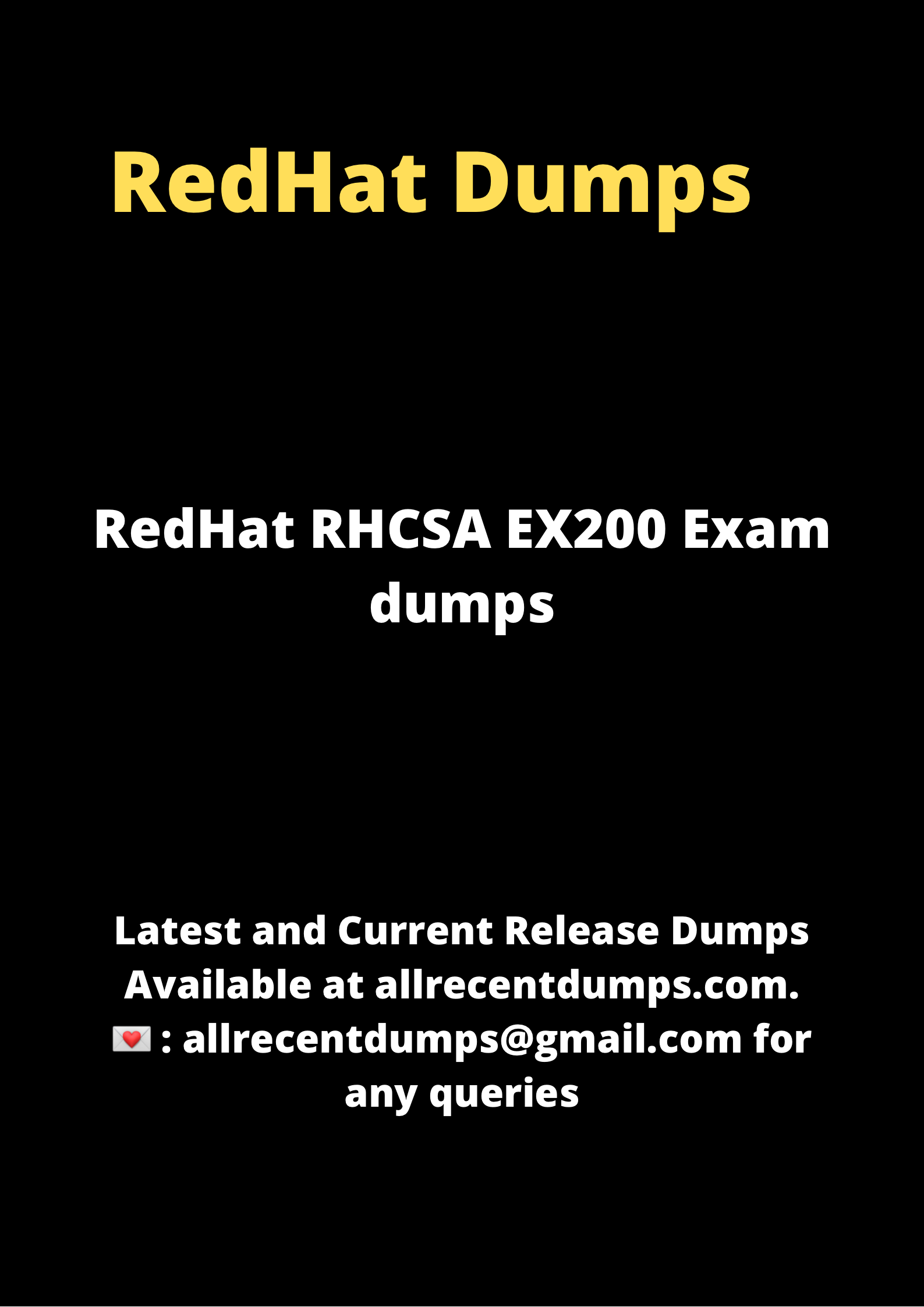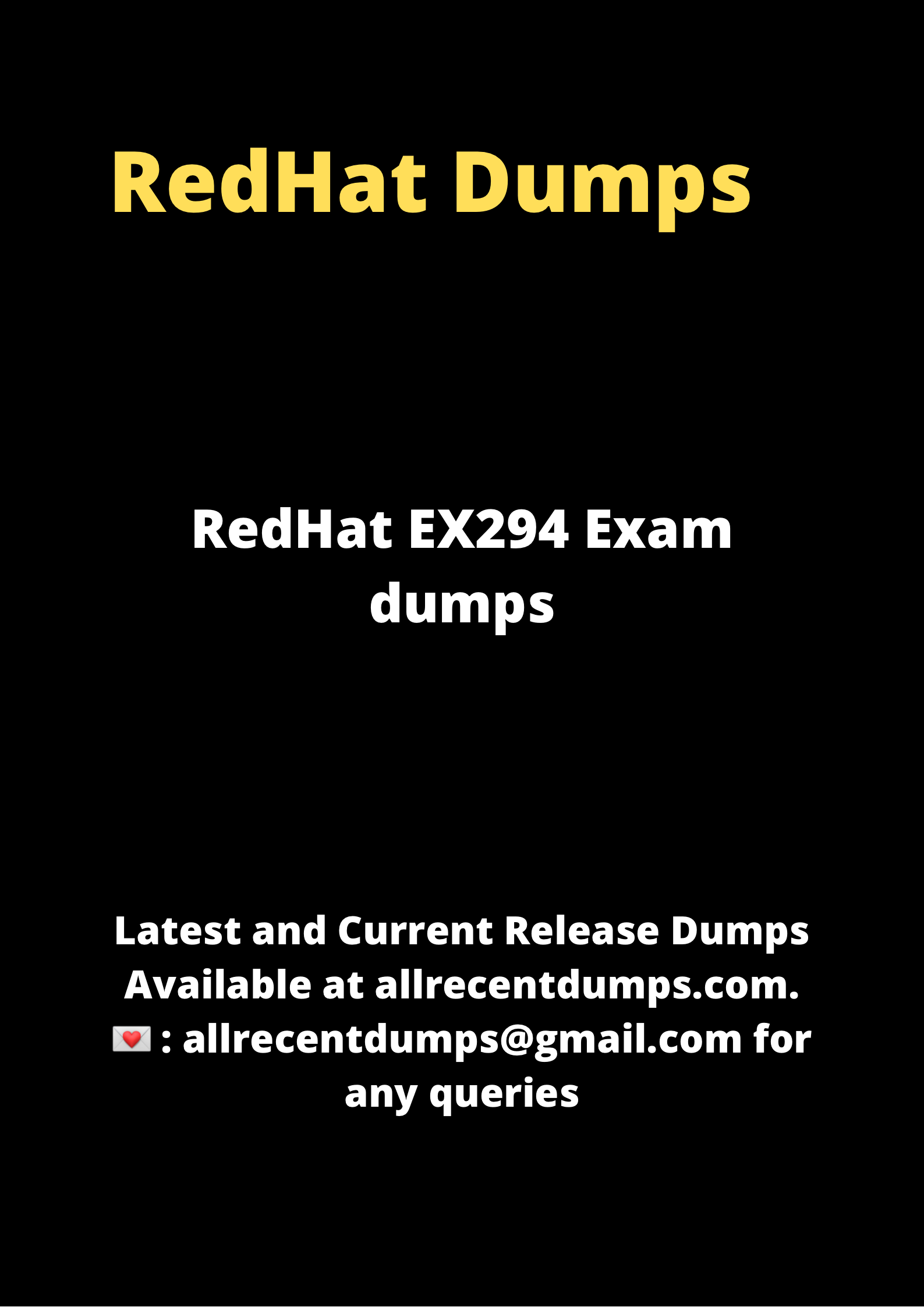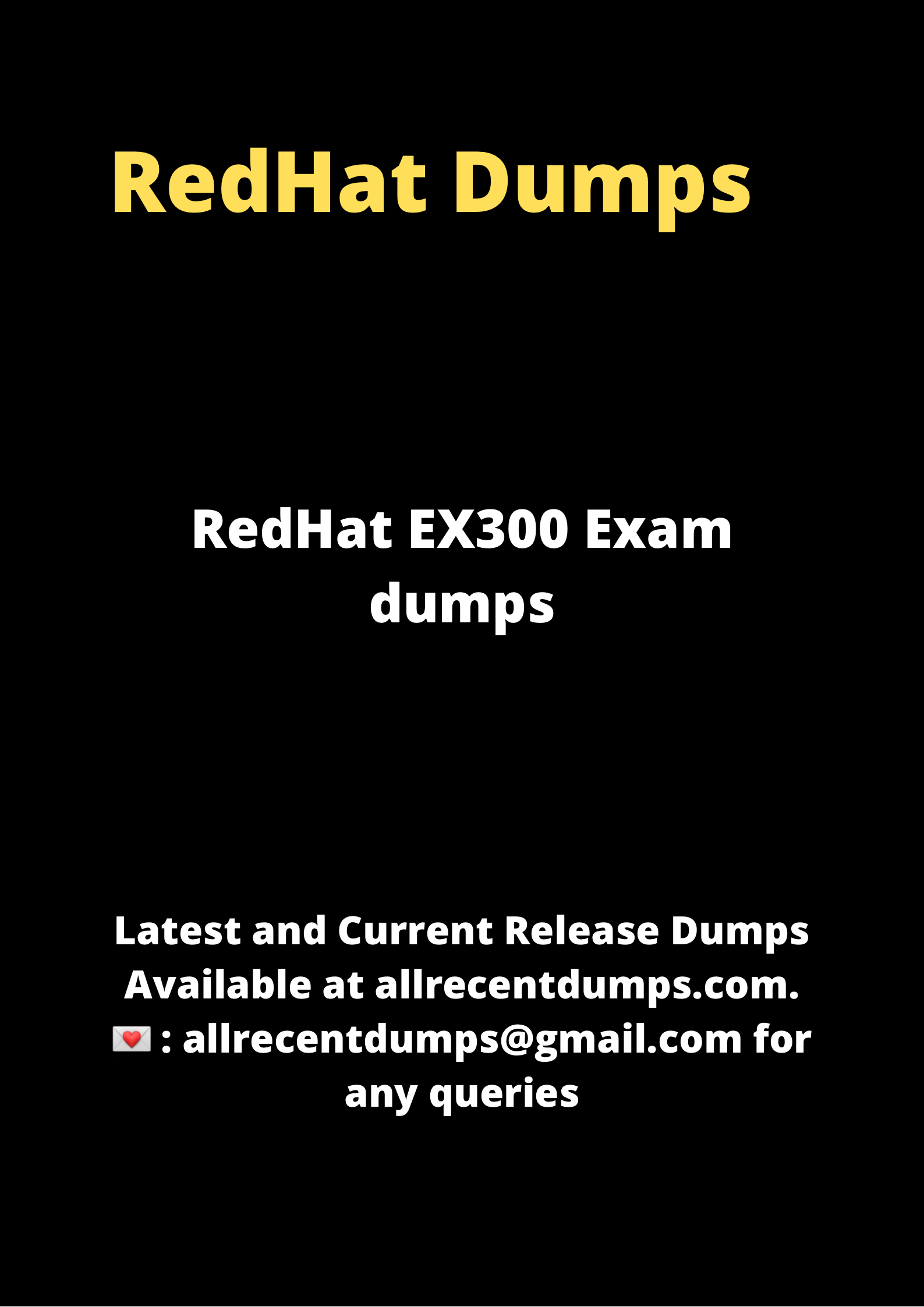Description
The Red Hat EX200 Exam Preparation Guide is designed to provide candidates with the necessary information about the RHCSA exam. It includes an exam summary, sample questions, a practice test, objectives, and ways to interpret the exam objectives to help candidates assess the types of questions and answers that may be asked during the Red Hat Certified System Administrator (RHCSA) exam.
All candidates are encouraged to refer to the EX200 objectives and sample questions included in this preparation guide. The Red Hat RHCSA certification is primarily intended for candidates who wish to pursue a career in the field of Linux administration and demonstrate their expertise. We encourage you to use the practice exam provided in this certification guide to familiarize yourself with the exam environment and identify areas of knowledge that you need more work on before taking the Certified System Administrator exam. RedHat. Summary of the Red Hat Ex200 exam:
Exam name
RED HAT certified system administrator (RHCSA)
EX200 EXE200 examination code
USD $ 400 test price
Duration 150 minutes
Number of questions 20
Compound 210/300
RED HAT RED HAT SYSTEM Administration I (RH124)
Red Hat System Administration II (RH134)
Rhcsa Rapid Track Race (RH199)
Plan the Pearson examination seen
Examples of RED questions has examples of EX200 questions
REDIVE PRACTICE RED HAT Certified System Administrator (RHCSA) Practice test
Curriculum Rhcsa of the Red Hat:
Section objectives
Understand and use essential tools – Access to an entry request from Shell and the exit apartment with correct syntax
– Use the diversion for entry edition (>, >>, |, 2> etc.)
– Use GREP and regular expressions to analyze the text
– Access to remote systems with SSH
– Save and modify users in multi-user destinations
– Archive files, compress, unpack and uncontrolled with Tar, Star, Gzip- and Bzip2
– Create and modify text files
– Create, delete, copy and move files and directories
– Create hard and sweet links
-List, define and modify standard authorizations -ugo / rwx
– Search, read and use system documentation, including humans, information and files in / usr / share / doc
Create simple shell scripts – code code (use of: SI, test, [] etc.)
– Use loop constructions (for etc.) to process the file and the entry of the command line
– Treatment of script inputs ($ 1, $ 2 etc.)
– Shell command processing edition in a script
– Processing of the shell control codes
Operating operating systems – Start, start and normally activate a system
– Start starting systems manually in different destinations
– Interrupt the starting process to access a system
– Identify CPU / memory processes and killing processes
– Adjust process planning
– Manage the adjustment profiles
– Search and interpret files and journals of the system protocol
– Get system magazines
– Start, stop and check the condition of network services
– Transfer files between systems safely
Configure local memory – List, create, delete partitions on MBR and GPT discs
– Create and delete physical volumes
– Volume volume volume groups
– Create and delete logical volumes
– Configure systems to assemble file systems at the beginning by universally clear ID (Uuid) or lettering
– Add new logic scores and volumes and exchange a system in a non -destructive manner
Create and configure file systems – Create, assemble, degraded and use VFAT, Ext4 and XFS file systems
– Mount and rid of network file systems using NFS
– Expand existing logical volumes
-Creation and configure Set-Gid directories for cooperation
– Configure the compression of the hard drive
– Manage the layer camp
– Correct diagnosis and problems with file authorization
Provide, configure and maintain systems – Plan tasks with AT and Cron
– Start and stop services and configure services to automatically start the boat
– Configure systems to automatically start a specific objective
– Configure temporal service customers
– Install and update Red Hat Network software packages, a remote repository or local file system
– Work with package modules
– Modify the start -up charger system
Manage basic networks – Configure IPV4 and IPv6 addresses
– Configure the resolution of the host name
– Configure network services to automatically start the boat
-restrict access to the network with the CMD / firewall
Manage users and groups – Create, delete and modify local user accounts
– Change passwords and adjust the password for local user accounts
– Create, delete and change local groups and group subscriptions
– Configure the access to the superutilizers
Manage security-Configure the parameters of the firewall with firewall -CMD / Firewall
– Create and use lists for file access control and use lists
– Configure authentication based on the key for SSH
– put
– lists and identify the Selinux file and the context of the process
– Restore standard file contexts
– Use the Boolean settings to modify the system System Settresses
-Diagnosia and the development of violations of routine ligennes -selinux
Manage the containers – Find and call container images from a remote inscription
– Inspection of container images
– Create container management with orders such as Podman and Skopeo
– carry out fundamental management of containers, as
– Do a service in a container
– Configure a container to start automatically as a systemd service
– Attach a persistent memory on a container





Reviews
0.0 Average Rating Rated ( 0 Review )
There are no reviews yet.